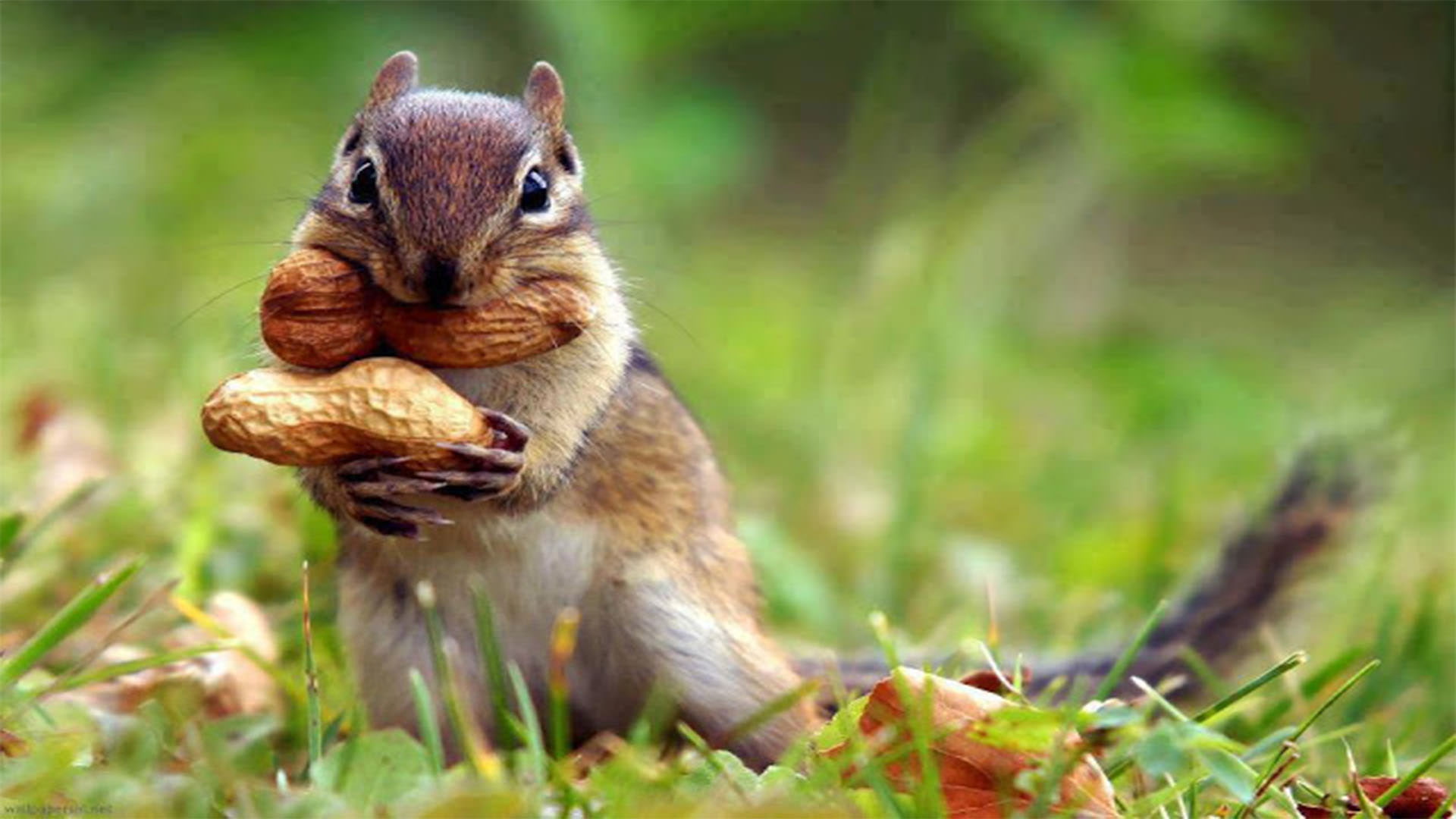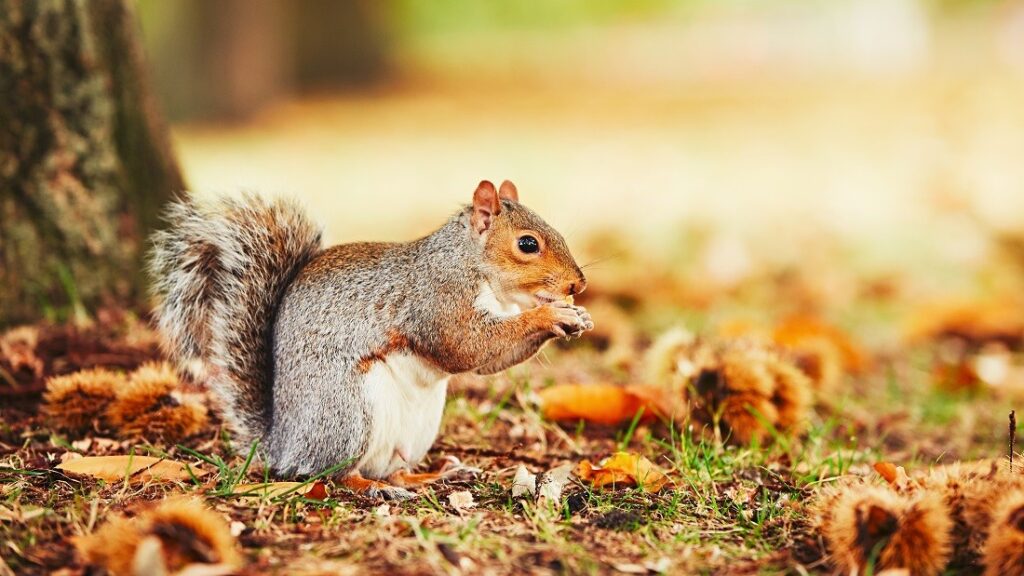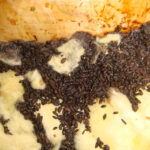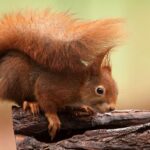Squirrels are some of the most common and easily recognizable wildlife creatures across the globe.
Whether they’re darting through city parks, foraging in forests, or leaping from tree to tree, these small mammals play an essential role in many ecosystems.
If you’ve ever wondered what squirrels eat in the wild, you’re not alone! Their diet is quite diverse, influenced by their habitat, the seasons, and the availability of food.
Nuts: The Core of a Squirrel’s Diet
Nuts are undoubtedly the most iconic food that squirrels eat, and for good reason. Squirrels are known for their impressive ability to collect and store nuts for the winter months.
The most common types of nuts in a squirrel’s diet include:
- Acorns: These are a staple for many species of squirrels, especially tree squirrels. They are rich in fats and carbohydrates, providing the energy needed for survival.
- Hazelnuts: These nuts are also favored by squirrels and can be found in woodlands and forests.
- Walnuts, almonds, and pecans: In regions where these trees grow, squirrels will gladly feast on their nuts.
Squirrels have strong, sharp teeth to crack open the hard shells of these nuts, and they often bury them in the ground to create caches.
This behavior is not just instinctual—it also helps in the regeneration of trees, as some of the hidden nuts eventually grow into new plants.
Seeds: A Versatile Snack
In addition to nuts, squirrels will eat a variety of seeds, which are easy to find and provide a great source of energy. These may include:
- Pine seeds: Found within the cones of pine trees, these seeds are particularly important in the diet of squirrels living in coniferous forests.
- Sunflower seeds: In urban areas or gardens, squirrels will often raid bird feeders to snack on sunflower seeds.
- Maple seeds: Squirrels are known to consume the seeds of various tree species, such as maple, which fall during the spring.
Seeds are a high-calorie food source that help squirrels maintain their energy levels throughout the year.
Fruits and Berries: Nature’s Sweet Treats
While nuts and seeds make up a significant portion of their diet, squirrels also indulge in a variety of fruits and berries when they are in season. This includes:
- Berries: Blackberries, raspberries, and strawberries are favorites when available in the wild.
- Apples: Squirrels will nibble on fallen apples or other fruits in orchards and gardens.
- Pears and cherries: If these fruits are accessible, squirrels will feast on them, enjoying both the flesh and the seeds.
Fruits provide an important source of vitamins, particularly in warmer months, when they are abundant. Squirrels are opportunistic feeders, and their ability to adapt to different food sources helps them thrive in various environments.
Fungi: An Unexpected Delicacy
Squirrels are not strictly herbivores; they will also eat fungi, including mushrooms.
While they may not consume all types of fungi, certain species are a regular part of their diet, particularly during damp or rainy periods when mushrooms are in abundance.
Mushrooms provide essential nutrients like protein and fiber, which complement their mainly plant-based diet.
Tree Bark and Wood: A Last Resort
While squirrels prefer to eat nuts, seeds, fruits, and fungi, they will sometimes turn to tree bark or even soft wood when food is scarce.
This is especially true during the winter months when other food sources are limited. Squirrels will gnaw on the bark of certain tree species to extract nutrients, though this is not their first choice.
It’s often more of a survival tactic than a preference, as eating too much bark can damage the trees and limit future food sources.
Insects and Small Animals: The Opportunistic Omnivore
Although squirrels are generally considered herbivores, they are opportunistic feeders and may eat insects, eggs, and even small birds when the opportunity arises.
This typically happens when they are in need of protein, particularly in times of scarcity. Common sources of animal protein include:
- Insects: Squirrels may catch and eat various insects, including caterpillars, grasshoppers, and beetles.
- Bird eggs: In some cases, squirrels may raid bird nests to consume eggs.
These animal-based food sources provide essential protein and fats, which are sometimes needed to balance their diet, especially when plant-based options are limited.
How Squirrels Forage and Store Food
Squirrels have an extraordinary ability to locate and store food.
Their keen sense of smell allows them to detect hidden caches, whether they are buried in the ground or tucked away in tree hollows.
This is especially crucial for survival in winter, when food is harder to come by. Squirrels store food in various ways, such as:
- Caching: Squirrels bury nuts and seeds in the ground in various locations. This helps ensure a steady food supply during the winter months when food is scarce.
- Hoarding in tree nests: Some squirrels, particularly tree squirrels, store food in their nests, keeping it close by during the cold months.

Seasonal Variations in Their Diet
The diet of squirrels varies significantly depending on the time of year.
In the spring and summer, squirrels have access to a wide range of fresh food sources, including fruits, seeds, and insects.
However, as fall approaches, their focus shifts to collecting and storing food in preparation for winter.
During the colder months, their diet mainly consists of the food they’ve cached earlier, such as acorns and nuts, along with tree bark and fungi if other supplies are running low.
Conclusion
Squirrels are adaptable creatures with a varied diet that reflects the resources available in their environment.
Their eating habits are dictated by seasonal changes, with nuts, seeds, and fruits forming the core of their diet.
While they are primarily herbivorous, squirrels will also consume insects and other small animals when necessary.
Their ability to forage, cache food, and adapt to different food sources is what allows squirrels to thrive in diverse habitats—from dense forests to urban landscapes. So, the next time you spot a squirrel, you’ll know that it’s not just busy being cute; it’s likely foraging for its next meal or preparing for the winter months ahead.



